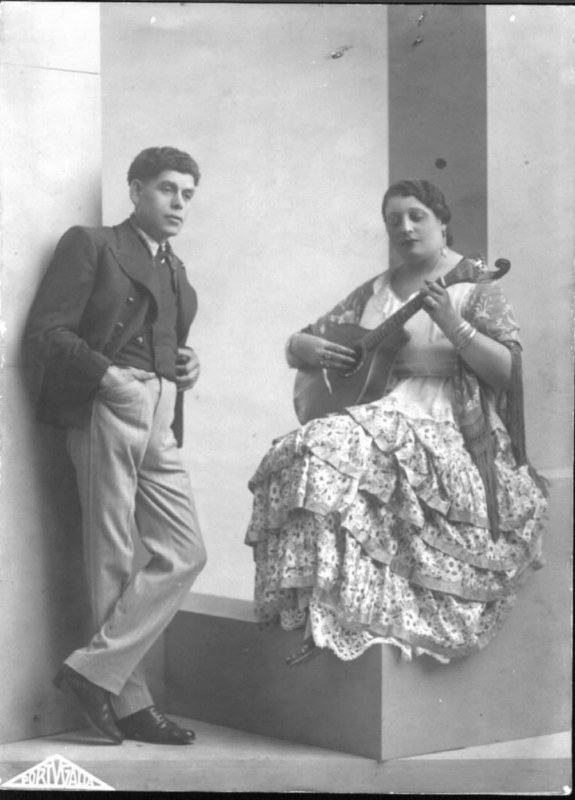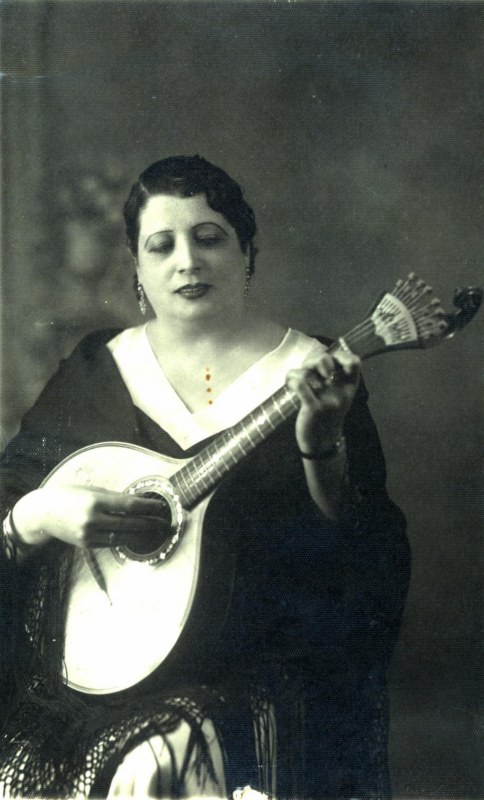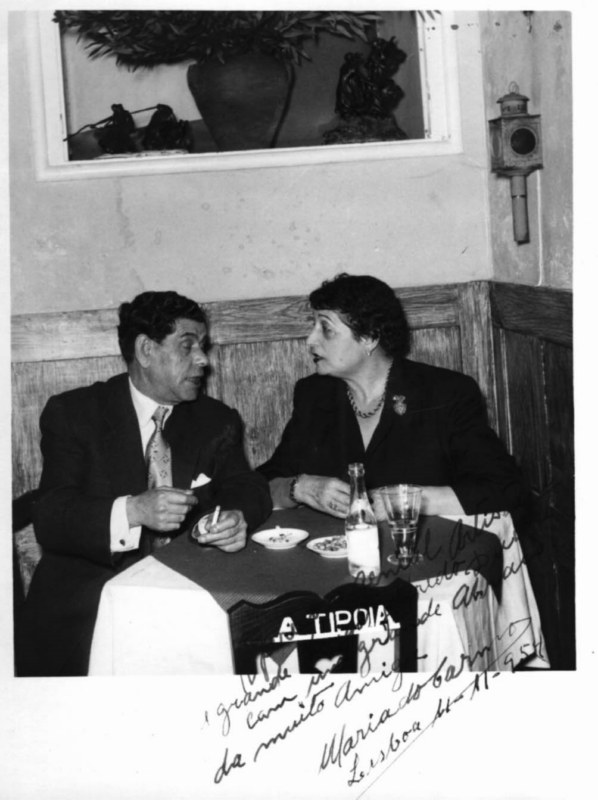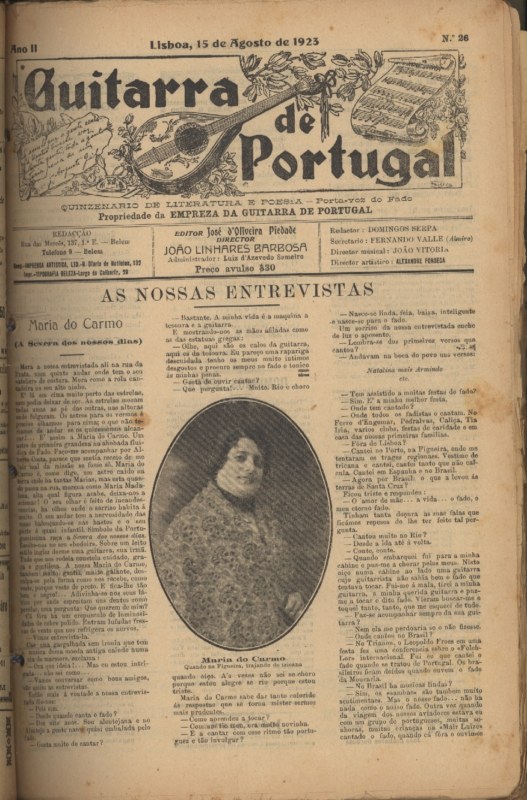Know more:
Maria do Carmo
(N. 11 January, 1894 - M. January, 1894)Maria do Carmo was born in Moura, Alentejo, on the 11 January 1894, and was the daughter of Francisco Páscoa and Madalena Fontes.
At three years old, she moves to Lisbon, to the Estrela neighbourhood, where she would meet Teófilo Braga. At 7 years old she surprises everyone by singing the following quatrain on her way to Algés:
She started visiting fado houses when she was 11 years-old, replying gladly when she was asked to sing.
Later she was admitted in Casa Ramiro Leão as a shirt make apprentice. After a few years, she set up an atelier at her own home.
Never leaving her daily job, Maria do Carmo did not stop singing fado and one could see her at Feira da Luz, and at the houses and restaurants “Águia Roxa”, “Ferro de Engomar”, “Caliça”, “Pedralvas”, “Nova Sintra”, “Magrinho”, “Manuel dos Passarinhos”, “Bacalhau”, “Perna de Pau”, “Quebra-Bilhas”, “Tia Helena”, “Montanha”, “Charquinho”, and “José dos Pacatos”.
In 1921/22 she visited Brazil, willing to set up a sowing atelier, but due to some difficulties, she instead managed a little hotel called «Pensão Familiar» which served Portuguese traditional food.
Two and a half years later, Maria do Carmo returned to Lisbon, re-organizing her atelier, working while singing at charity parties, at the home of aristocrats and bullfighting arenas.
She becomes a professional in 1926, when she returns to Brazil hired to sing fado at Cinema Central do Rio de Janeiro; she returned to Portugal shortly after that.
In 1928 she becomes one of the partners of the house “Ferro de Engomar” and travels all over the country, with great success. That same year she divorces Martinho D´Assunção.
She records with the label Columbia and performs, along with Maria Alice, Ercília Costa, Maria Albertina, Alberto Costa, among others, in the opereta «História do Fado» (1931) presented at Teatro Maria Vitória, and «Mouraria», at Coliseu dos Recreios.
She was part of the Fado Embassy that left for Brazil on August 1934, and was directed by Alberto Reis; among the Embassy’s other elements were Maria do Carmo Torres, Branca Saldanha, Filipe Pinto, Joaquim Pimentel, Armandinho (Portuguese guitar) e Santos Moreira (Spanish guitar). (cf. Guitarra de Portugal, 21 August 1934).
Back in Portugal, Maria do Carmo was still asked to perform in countless charity parties, casinos and the radio.
She was one of the artists who gently performed at Grande Concurso de Fados 1957, organized by the newspaper “A Voz de Portugal” (cf. A Voz Portugal, 31 August 1957).
Maria do Carmo passed away in 1964.
Source:
“Guitarra de Portugal”, 30 July 1934;
“Guitarra de Portugal” 21 August 1934;
“A Voz de Portugal” 31 August 1957;
“Azes do Fado”, dedicated to Maria do Carmo, 1 February 1936;
Machado, A.Victor (1937) “Ídolos do Fado”, Lisboa, Tipografia Gonçalves



